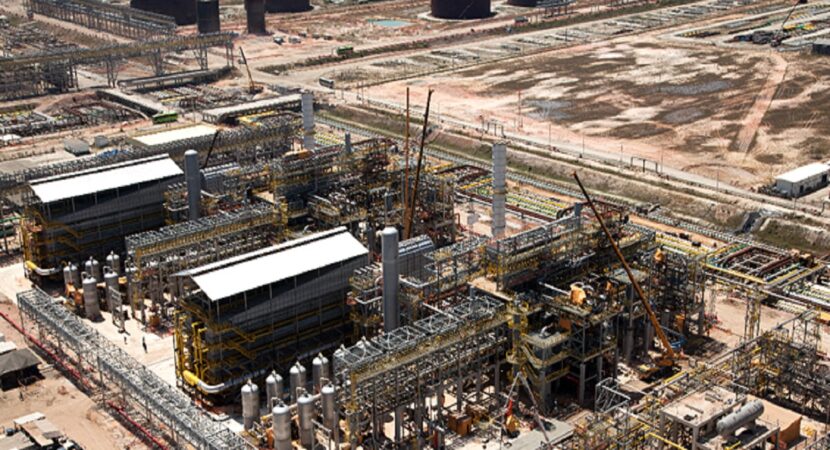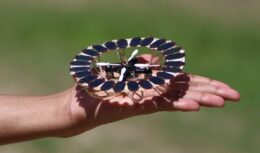
Itaboraí is getting ready to be one of the largest pre-salt natural gas hubs in Brazil, breaking away from the shadow of the former Comperj and placing hopes in a new investment cycle
The disclosure of Petrobras' Strategic Plan – 2022-2026 – forecasting investments of around US$63 billion for exploration and production of oil and gas, with US$38,4 billion earmarked exclusively for the pre-salt area, broadly confirmed the recent company's options, privileging high-yield assets to the detriment of low-return initiatives. However, some considerations can be noted, such as the company's decision to suspend the sale of the Abreu Lima Refinery (RNEST) and, at the same time, invest 1,3 billion dollars in the construction of the second stage of the project, expanding its refining capacity to 230 bpd and improving the production of diesel type S.10, considered less polluting, to meet the determinations of regulatory entities and for the consumption of modern engines.
Other related articles
We also verified the forecast of resources of 1 billion dollars for the Polo GasLub, in Itaboraí, in areas of the former COMPERJ, with the purpose of finishing the works of the UPGN and building the connections with the Refinery of Duque de Caxias (REDUC), with the aim of implementing units producing high quality lubricants. The new configuration proposed by Petrobras for the old COMPERJ is anchored in the operations of the UPGN, with the capacity to benefit 21 million cubic meters of natural gas per day, originating from the Santos Basin, and transported by the Route 3 gas pipeline.
Continuing, the company also transferred to the state of Rio de Janeiro the territorial and environmental management of 40 million square meters, occupying about 4 thousand soccer fields, aiming at the formation of the Industrial Condominium of Itaboraí, destined to house large and medium-sized establishments industrial and services.
The productive restructuring foreseen for the areas of the former COMPERJ should contribute to the inclusion of sustainability and an energy transition, since natural gas is a less polluting input than oil and abundant due to the pre-salt reserves of the Santos Basin , although it has a high CO content2, which should be the subject of Development and Innovation Research (RD&I) aimed at reducing it for industrial use.
Environmental impacts
The dimension of sustainability imposes itself, as the region has suffered an intense process of depredation of natural resources, motivated by earthworks of great magnitude, which have harmed biodiversity and, above all, the storage capacity of local water resources, making it difficult for large industrial plants to be built in the east of Rio de Janeiro.
For the Syndicate of the Industry of Chemicals for Industrial Purposes of the state of Rio de Janeiro (SIQUIRJ), the advent of GasLub represents the possibility of a nobler use for natural gas, which can be used in plants intended for the production of nitrogenous fertilizers, as the country imports around 80% of its needs, particularly from countries such as Russia, China, Morocco and the Middle East. In this regard, Brazil is contributing to the generation of jobs in global markets, outside its borders, and penalizing the generation of work and income for its huge economically active population.
Due to the depredation of natural resources resulting in part from the magnitude of the earthworks at the former COMPERJ, Petrobras recognized the environmental liability represented by the stoppage of the project and, through a Term of Adjustment of Conduct (TAC), assumed commitments with the Public Ministry of the State of Rio de Janeiro (MPE-RJ) in order to restore, promote and guarantee the socio-environmental balance in the surroundings of the GasLub Hub. Thus, the company promoted actions for planting and monitoring 466 hectares on the banks of the Macacu River in support of the “Socio-environmental Responsibility Guapiaçu Grande Vida” project, adding 260 hectares of replanting inside the GasLub Hub. These actions were disclosed to representatives of the State Institute for the Environment (INEA) and the State Secretariat for the Environment and Sustainability (SEAS).
We found that the company has been gradually recovering and obtaining certifications on good economic, social and environmental practices, as in the case of the return to Dow Jones Sustainability World Index, one of the most important financial performance indexes of leading companies in sustainability at a global level. It is also important to note that Petrobras achieved 2021% adherence to the indicators of the Brazilian Institute of Corporate Governance (IBGC) in 94, and fourth place in the Association for Supply Chain Management, an institution focused on the adoption of excellent environmental, ethical and economic procedures. The inclusion of the company in these certifications of excellence can constitute support points for the adoption of procedures guided by sustainability in the construction of Polo Gaslub.
By Jacob Binsztok
Professor of Human Geography at the Graduate Programs in Geography and Sustainable Systems Management at the Fluminense Federal University, PhD in Geography from USP, Coordinator of the Center for Agro-environmental Studies and Research (NEPAM) at UFF and researcher at CNPq and Faperj .
Email: ja************@gm***.com













Army summons Brazilians with up to…
Come be a watermelon, you too
Air Force F-16 fighters…
Which genocide are you talking about? Than…
Air Force F-16 fighters…
Everything is fine, 100-year secrecy,…
Air Force F-16 fighters…
Well... It's flying scrap... Typical...
Brazil begins an ambitious journey…
Very poor project with the final station…
Be it Niobio, iron, soy, .... Brazilwood,…
This will be our undoing
We are all full of graphene in…
Inside our body we are full of this…
I thought the comparison was a bit…
The best energy continues to be nuclear,…
Positive, it would be an excellent option.
Great, very good, this project has to…